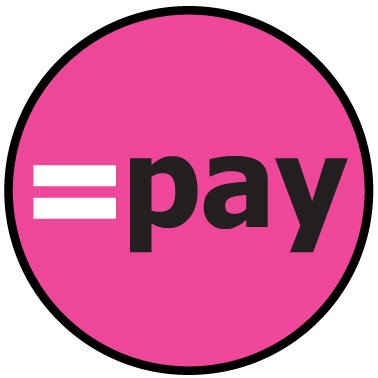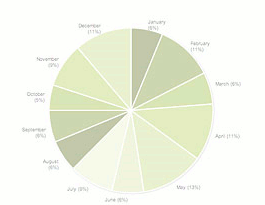


Equal Pay Day
 Dear Friends of Women in Science,
Dear Friends of Women in Science,
April 12 is Equal Pay Day, and AAUW, AWIS, and other organizations are producing a wave of publicity for this day to help everyone, particularly Congress, focus on the need for the Paycheck Fairness Act and other means to help women get beyond 77 cents per dollar earned by men. On April 12, women will stop working for free and get paid at the same rates as men for the rest of the year, in theory.
The math is a bit complex, since last year's data were used (obviously we don't have this year's yet), as well as last year's percent on the dollar that women get compared to men. There are interesting differences by state and by profession. STEM fields are among the most equally paid, but they are underpopulated with women compared to fields like nursing and teaching, the traditionally female occupations. Christi's posting earlier showed some of these data.
A particular issue that was not addressed by the Lilly Ledbetter Act, passed by Congress in 2009, is the issue of comparable work. If a woman and a man have invested similar times of education and on-the-job training in becoming prepared for a position, and if the two positions involve similar kinds of daily activities, womens rights activists argue they should be paid comparably.
That would mean a woman who went for graduate work and became an acquisitions librarian, supervising six employees, would be entitled to a similar pay scale as a man who went for graduate work in public health and evaluated health threats in a city, supervising six employees. Those details of what compares with what would no doubt need careful description by a federal agency, including public comment.
Do you support comparable pay for comparable work, or do you think it's not possible to achieve true pay equity between genders until there are even distributions of men and women across all fields of work?
cheers,
Laura

Hi SciFemXX
I agree, there needs to be a more general solution, not just piecemeal. I have some hope that the approach of having a governmental agency figure out the equivalencies would be helpful, although for sure it would not be perfect.
cheers,
Laura
HI Alan,
Interesting additional information you've found here. I think the Society of Female Executives had a good report recently about discrepancies in salaries. From what I recall, HR specialists had a median of 46K for females and 74K for males, doctors and surgeons had a median of 50K for females and 97K for males, etc. So some of the discrepancy comes from weak pay for the same jobs, other parts from women's not having exactly the same kinds of jobs as men (fewer engineers, more midwives as you suggested below).
cheers,
Laura
I ran into this while hunting down the Competitiveness Report from the World Economic Forum.
"The United States (19) makes a leap in the rankings this
year, up from the 31st place in 2009 to enter the top 20
for the first time. The United States has a demonstrated
strength in educational attainment, with very high levels of
literacy for both women and men and very high levels of
women’s enrolment in primary, secondary and tertiaryeducation, with women outstripping men in tertiary-level education. The United States places 6th in the world in
terms of economic participation and opportunity. Women’s
labour force participation stands at 68% while men’s is
80%. While new data show an increase in the female
estimated earned income—up from US$ 25,613 to
US$ 34,996 (PPP)—leading to some of the increase in
the US ranking, the perceived wage inequality for similar
work remains high, placing the United States at 64th in
the world on this variable. Another core strength of the
United States is the prominent numbers of women in
legislative, senior official and managerial positions as well
professional and technical worker positions. While political
empowerment has not been a key strength of the United
States in previous years, there have been some gains in the percentage of women in ministerial level positions in the
current administration, up from 24% to 33%."
Global Gender Gap Report 2010 pages 25 - 26
http://www.weforum.org/women-leaders-and-gender-parity
The link on the reports on that page is broken. Use search for more reports link and you can get to both reports.
64th in 2010 on pay gap.
I went to this site just to try out a few professions/jobs.
http://www.payscale.com/research/US/Country=United_States/Salary
I plugged in:
Electical Engineer
Nurse Midwife and CRNA
A MSEE is worth $60k to $142k
http://www.payscale.com/research/US/Degree=Master_of_Science%2c_Electrical_Engineering_(MSEE)/Salary
A MSN is worth $70k to $90k
http://www.payscale.com/research/US/Job=Certified_Nurse_Midwife/Salary
A CRNA is worth $104k to $151k
http://www.payscale.com/research/US/Certification=Certified_Registered_Nurse_Anesthetist_(CRNA)/Salary
I used the Houston data for this post for MSEE, because of the wide variance. Both the highest and lowest salaries.
The engineer data is not as cut and dried as it might look as it varies a great deal. But clearly the top end in most areas beats the Nurse Midwife.
The CRNA 56% female 44% male came out the best.
I went with the devil is in the details.
The women's dominated fields are overwhelmed with low paying jobs when the work is much more valuable than the pay would reflect. I don't think this will be fixed until something like comparable pay is worked out.

















